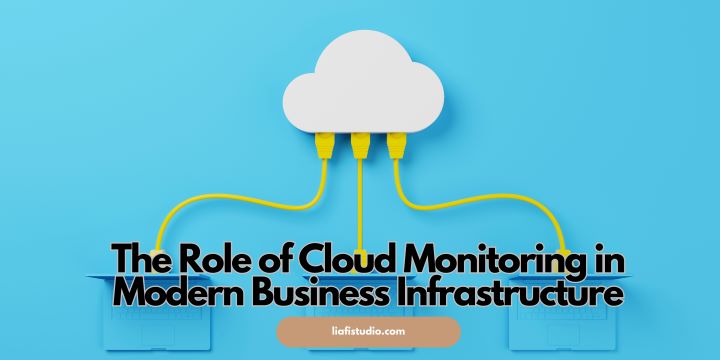Table of Contents
- The Importance of Cloud Monitoring
- Core Benefits of Implementing Cloud Monitoring
- Key Features of Effective Cloud Monitoring Tools
- Best Practices for Cloud Monitoring
- Real-World Case Studies
- Challenges Faced in Cloud Monitoring
- Future Trends in Cloud Monitoring
The Importance of Cloud Monitoring
Cloud computing has revolutionized the business landscape, presenting numerous advantages and introducing new challenges. Monitoring these cloud environments is essential to ensure optimal performance and security. This approach offers real-time insights and helps maintain regulatory compliance, reducing the risk of data breaches. According to Forbes, the global push toward digital transformation underscores the need for robust monitoring solutions that provide actionable insights.
Effective cloud monitoring allows businesses to maintain control and visibility over their cloud infrastructure, which would otherwise be difficult to achieve. With the complexity and scale of modern cloud environments, relying solely on manual oversight is no longer feasible. Automated monitoring solutions can continuously track system performance, detect anomalies, and provide actionable alerts. This proactive approach helps identify performance bottlenecks, ensure uptime, and protect against cyber threats. As businesses grow and cloud environments become more complex, cloud monitoring becomes crucial in maintaining operational efficiency and security.
Core Benefits of Implementing Cloud Monitoring
Companies increasingly adopt hybrid cloud monitoring solutions to efficiently manage their diverse IT landscapes. When businesses implement cloud monitoring, they gain visibility into system performance, enhance security measures, and improve customer satisfaction. Here are some key benefits:
- Enhanced Security: Timely detection of vulnerabilities helps in preventing data breaches. Cloud monitoring tools can identify unusual patterns or unauthorized access attempts, allowing immediate action to mitigate potential risks. Enhanced security is vital in protecting sensitive business data and maintaining customer trust.
- Cost Efficiency: Identifying underutilized resources can lead to significant cost savings. By monitoring resource utilization, businesses can optimize their cloud spending, eliminating waste and ensuring they only pay for what they use. This can be particularly beneficial for companies operating with tight budgets or those looking to maximize their ROI on cloud investments.
- Improved Uptime: Proactive monitoring helps minimize downtime and maintain service availability. Continuous monitoring allows for the early detection of issues, enabling swift resolution before they escalate into major problems. This helps maintain high service availability, which is crucial for customer satisfaction and business continuity.
Key Features of Effective Cloud Monitoring Tools
An effective cloud monitoring tool should include the following features:
- Real-Time Analytics: Immediate insights into system performance. Real-time analytics allow businesses to monitor their cloud environments continuously, providing up-to-the-minute data on system health, performance metrics, and potential issues. This enables quick decision-making and timely responses to any anomalies detected.
- Scalability: The ability to scale as your business grows. As businesses evolve and their IT infrastructure expands, cloud monitoring tools must be able to scale seamlessly. This ensures that monitoring capabilities keep pace with business growth, providing consistent oversight and performance management regardless of the size or complexity of the cloud environment.
- Custom Alerts: Tailored notifications to address specific issues promptly. Customizable alerts allow businesses to set thresholds and parameters that trigger messages based on their unique requirements. This immediately alerts key personnel to critical issues, enabling timely intervention and resolution.
Organizations must evaluate these features to ensure their chosen monitoring tool aligns with their business needs. Additionally, resources such as ZDNet can provide valuable insights into the latest advancements in cloud computing technology. By staying informed about the latest developments, businesses can make informed decisions about the tools and strategies that will best support their cloud monitoring efforts.
Best Practices for Cloud Monitoring
Implementing best practices in cloud monitoring can significantly improve the effectiveness of the process. Here are some recommended strategies:
- Regular Audits: Conduct frequent audits to assess system vulnerabilities and performance bottlenecks. These audits help identify areas for improvement and ensure that cloud monitoring practices remain effective and up-to-date. This proactive approach allows businesses to continuously refine their monitoring strategies and adapt to evolving threats and challenges.
- Integrated Solutions: Use integrated tools that offer a holistic view of your cloud infrastructure. Integrated monitoring solutions provide a unified platform for managing and monitoring various cloud environments, streamlining operations, and reducing complexity. This holistic view enhances visibility and control, enabling businesses to manage their cloud resources more effectively.
- Staff Training: Ensure your IT staff is well-trained in utilizing cloud monitoring tools effectively. Investing in staff training ensures the IT team has the knowledge and skills to leverage cloud monitoring tools to their fullest potential. This improves the monitoring process’s overall effectiveness and empowers the team to respond to issues more efficiently and accurately.
Real-World Case Studies
Understanding the practical applications of cloud monitoring can be insightful. Here are a couple of case studies from diverse industries:
Retail Industry: A leading retailer implemented cloud monitoring to optimize its e-commerce platform, resulting in a 20% increase in transaction speed. The monitoring solution provided real-time insights into website performance, enabling the retailer to promptly identify and address performance bottlenecks. This improvement improved customer experience, increased sales, and higher customer satisfaction.
Healthcare Sector: A healthcare provider adopted cloud monitoring to safeguard patient data, enhancing compliance with data protection regulations. The monitoring tools helped the provider detect and respond to potential security threats quickly, ensuring the confidentiality and integrity of patient information. By maintaining compliance with industry regulations, the healthcare provider was able to build trust with patients and stakeholders while avoiding costly penalties and reputational damage.
Challenges Faced in Cloud Monitoring
Despite its benefits, cloud monitoring comes with its own set of challenges:
- Data Overload: Handling vast amounts of data can be daunting and requires advanced analytics tools. The sheer volume of data generated by cloud environments can overwhelm traditional monitoring systems, necessitating sophisticated analytics to filter, process, and interpret the data effectively.
- Complexity: Monitoring intricate cloud systems demands skilled IT personnel with specialized knowledge. Modern cloud environments, with their multiple layers and diverse components, require a deep understanding of various technologies and best practices. This specialized knowledge is essential for effective monitoring and issue resolution.
- Compliance: Ensuring compliance with industry standards and regulations is a continuous effort. Cloud monitoring must align with various legal and regulatory requirements, which can vary by industry and region. Maintaining compliance involves regular audits, updates to monitoring practices, and staying informed about regulation changes.
Future Trends in Cloud Monitoring
The future of cloud monitoring looks promising with continuous innovations. Emerging trends include:
- AI and Machine Learning: Leveraging AI to predict issues before they occur. Artificial intelligence and machine learning algorithms can analyze historical data and identify patterns that may indicate potential issues. This predictive capability allows businesses to address problems proactively, reducing downtime and improving system reliability.
- Serverless Architecture: Monitoring will evolve to support serverless computing, enhancing flexibility and efficiency. Serverless architecture abstracts away the underlying infrastructure, simplifying deployment and scaling. Monitoring tools must adapt to this paradigm, providing insights into serverless applications and their performance.
- IoT Integration: Integrating IoT within cloud monitoring systems will broaden the scope of monitoring capabilities. As the Internet of Things (IoT) grows, monitoring tools must incorporate IoT devices and their data streams. This integration will enable comprehensive monitoring of connected devices, enhancing visibility and control over the entire cloud infrastructure.
Staying up-to-date with these trends will help organizations maintain a competitive edge and leverage the latest technologies to support their cloud infrastructure. By adopting innovative monitoring solutions and practices, businesses can enhance their operational efficiency, security, and overall performance, positioning themselves for long-term success in the digital age.




